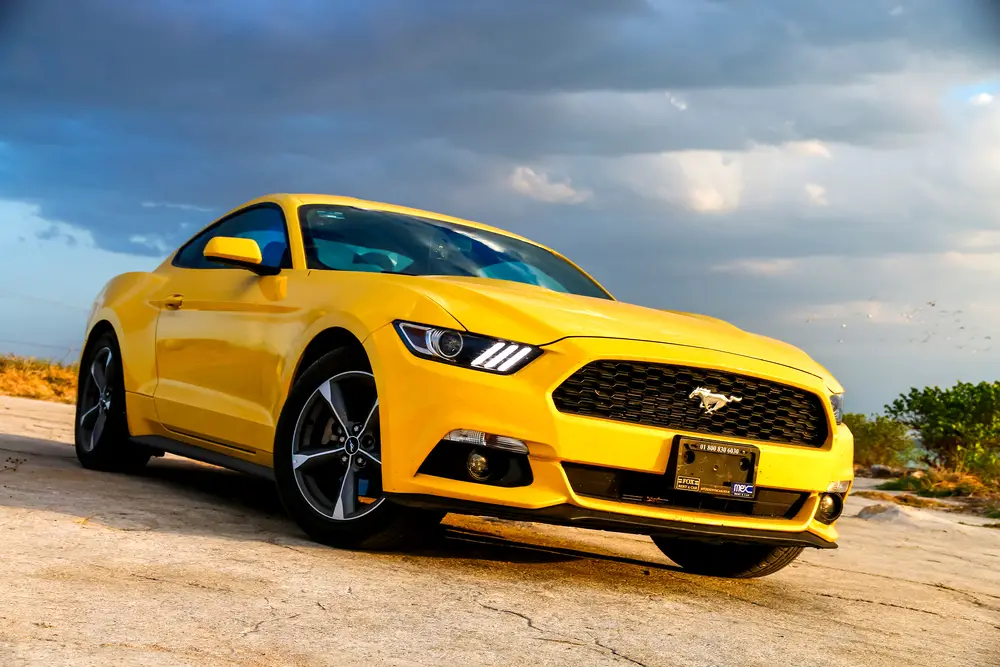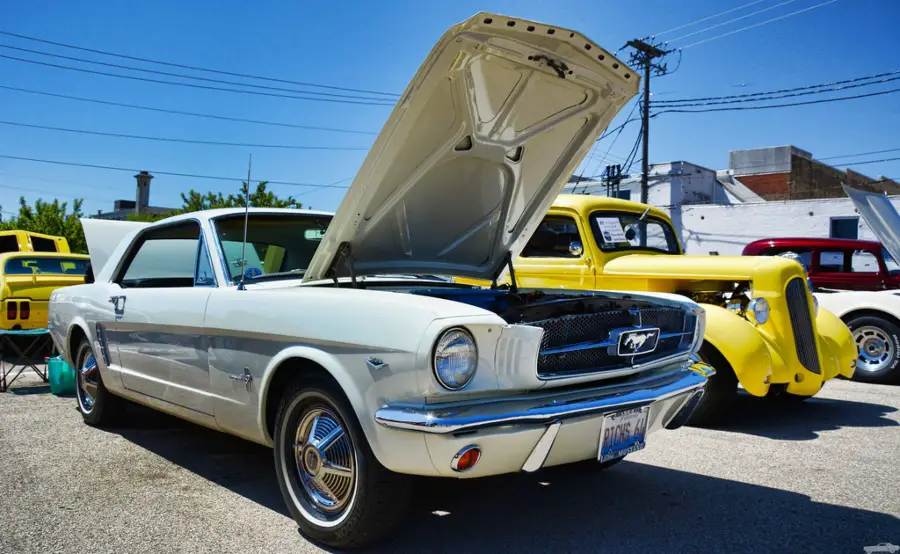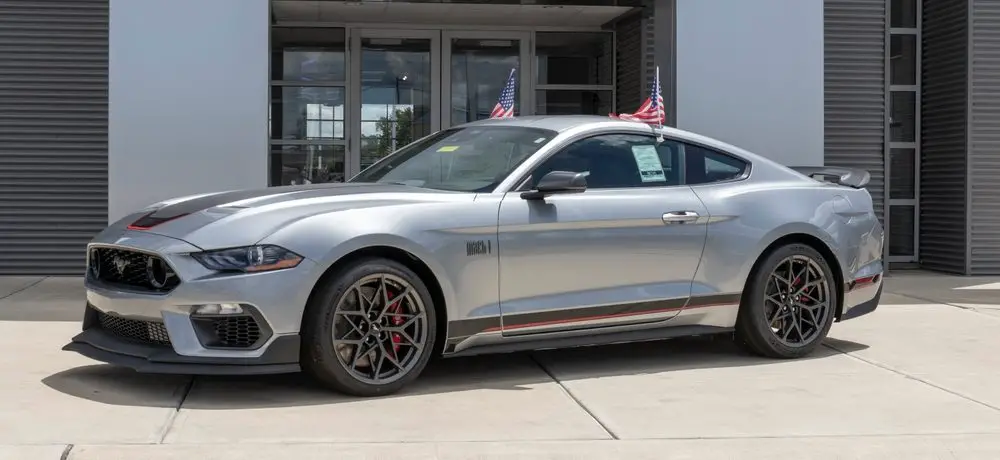
Nobody has ever squinted at the 1967 Chevrolet Camaro Z28 or 1864 Pontiac GTO and gone, “That’s a sports car.” However, some people would argue they are pony cars rather than muscle cars.
But your ’63 Ford Galaxie with a 119-inch wheelbase is an actual muscle car. The confusion between pony and muscle all began on April 17, 1964, when Ford debuted the Mustang at the World’s Fair.
The 1964.5 Ford Mustang was the world’s first pony car. It was a powerful vehicle, but sportier, with a wheelbase of only 108 inches. A proper muscle car has a wheelbase of over 110 inches. Modern muscle cars are nearly obsolete. The 2023 Dodge Charger and Challenger are set to be the finale.
Muscle cars are as American as apple pie. They define the American road trip and are featured in some of history’s best-loved movies.
However, to many people’s surprise and confusion, most of the beloved classics of muscle car history are what is known as pony cars. These machines still retain power, but they handle better.
1964.5 Mustang: The Original Pony Car

It was 1964 in New York City, and Ford’s Wonder Rotunda was one of the largest pavilions at the World Fair. There, on April 14, Ford introduced the Mustang.
It was a new class of vehicle, a pony car, named for the horse featured on the grill. Moreover, it was the first time a sporting “muscle” car would be offered in an affordable price range, the base model starting at $2,368.00.
The Mustang would go on to sell 418,000 in the first year and be honored with the Tiffany Gold Model for Design Excellence. In 1965 the Shelby Mustang was introduced, and in 2020 a racing prototype Shelby GT250R would sell for $3.85 million.
Bullitt: Pony Car Vs. Muscle Car
Mustangs could handle corners at respectable speeds, unlike a standard muscle car designed for drag racing.
The distinction would become legendary in Steve McQueen’s famous 10-minute and 45-second car chase scene in Bullitt. In the film, McQueen is in a green 1968 Mustang GT Fastback, pursuing two hitmen in a black 1968 Dodge Charger RT.
Watching snippets of the lengthy chase display the Mustang handling the corners a little better than the Charger, which undeniably has the power to roar up the renowned San Francisco hills.
The difference in handling between the two cars isn’t the engines; besides, in the film, the Mustang had been given a boost to help it keep up with the 375bhp of the Charger. Instead, the main distinction is the wheelbase.
Wheelbase: Pony Car Vs. Muscle Car
The wheelbase is the main distinction between a pony car (Mustang) and a muscle car (Charger). For example, a 1968 GT had a 108-inch wheelbase and was 183.6 inches in total length, whereas the Charger had a 117-inch wheelbase and was 208 inches in total length.
In the science of automobiles, a long wheelbase can make the car much more comfortable for a passenger. However, the shorter wheelbase will make it easier to corner.
To demonstrate the impact of the weight and wheelbase of a pony car versus a muscle car, in 2014, the Sunday Times tracked down owners of a 1968 GT and Charger and pitted the two friends against each other.
Admittedly, the Sunday Times chose a more sedate venue than San Francisco, a track in Kent (yes, they’re Brits). But from the video, it is clear that while the Charger has undeniable muscle, it struggles to corner.
The car’s owner admitted he had to take it down to second. But on the straight, the muscle car has more vroom.
Mustang: Muscle Car Vs. Pony Car Vs. Sports Car

The difference between muscle, pony, and sports cars is fuzzy, like any human construct, not based on scientific fact. However, there is a general, overall agreement on the definitions.
Thus, a Chrysler Voyager will never fall into the three categories; however, arguments have been made for Mustang in each.
What Defines A Muscle Car?
Merriam-Webster defines muscle cars as:
- American-made
- Powerful engine
- High-performance driving
If this is the definition being used to categorize vehicles as muscle cars, then the Mustang would fit. It is partly because of this that so many pony cars are referred to as muscle cars.
Others would add that a muscle car has:
- Rear-wheel drive (instead of front)
- A wheelbase over 110 inches
Controversially, some believe that to be a muscle car, it has to have been made between 1964 and 1974. However, there are cars before and after this date that are highly insulted by such a suggestion, including the 2023 Dodge Charger.
Lastly, some folks are out there conflating any sports car that isn’t electric as a muscle car. While muscle cars were often known as “gas guzzlers,” this misses the point of the style.
But, in the Merriam-Webster definition, the example at the bottom states, “Dodge…showed off a new concept for an all-electric muscle car.” Thus, the “gas guzzler” stereotype is being challenged.
What Defines A Pony Car?
Merriam-Webster defines a pony car as:
- 2-door hardtop
- Sporty styling
- High performance
Interestingly, Merriam-Webster states in the etymology that the first car of this type is the Mustang.
What Defines A Sports Car?
Merriam-Webster defines a sports car as:
- 2-passenger (usually)
- Low
- Small
- Quick response
- Easy Maneuverability
- High-speed
They give the 2022 Audi S3 as an example. But one from 1968 would be the Lamborghini Miura P400. It is longer than a modern sports car, but they are much closer to the road than the Mustang or Charger from that same year and far more aerodynamic. But the Mustang does have a whiff of a sports car about it.
But in 2015, Mustang changed from a live rear axle to an independent rear suspension. The live rear axle was cheaper, keeping the Mustang in the “working man’s” territory, unlike your Lamborghini.
But it also meant that the handling of a Mustang was not as good as most sports cars, while better than a muscle car.
With the switch in 2015, Mustang has further blurred the lines between pony and sport. Fast forward to the 2023 Ford Mustang Shelby GT500 Code Red, and what you have is something that looks a lot like a sports car.
Are Muscle Cars Still Being Made?
The 2023 Dodge Charger and Challenger are keeping the muscle car tradition alive. However, Dodge claims it is the duo’s final production year. After that, the American muscle car tradition appears to be coming to an end.
Conclusion
The Ford Mustang was the first of the pony cars, a vehicle that sits between a muscle car and a sports car. However, the longer they make them, the more they resemble sports cars, and they are becoming less affordable, too.
